3,3-dimethyl-2-butanol

3,3-dimethyl-2-butanol structure
|
Common Name | 3,3-dimethyl-2-butanol | ||
|---|---|---|---|---|
| CAS Number | 464-07-3 | Molecular Weight | 102.17500 | |
| Density | 0.812 g/mL at 25 °C(lit.) | Boiling Point | 119-121 °C(lit.) | |
| Molecular Formula | C6H14O | Melting Point | 4.8 °C(lit.) | |
| MSDS | Chinese USA | Flash Point | 84 °F | |
| Symbol |

GHS02 |
Signal Word | Warning | |
| Name | 3,3-dimethyl-2-butanol |
|---|---|
| Synonym | More Synonyms |
| Density | 0.812 g/mL at 25 °C(lit.) |
|---|---|
| Boiling Point | 119-121 °C(lit.) |
| Melting Point | 4.8 °C(lit.) |
| Molecular Formula | C6H14O |
| Molecular Weight | 102.17500 |
| Flash Point | 84 °F |
| Exact Mass | 102.10400 |
| PSA | 20.23000 |
| LogP | 1.41330 |
| Vapour Pressure | 8.47mmHg at 25°C |
| Index of Refraction | n20/D 1.415(lit.) |
Synonym: Tert-Butyl Methyl Carbinol; Pinacolyl Alcohol. SECTION 2 - COMPOSITION, INFORMATION ON INGREDIENTS
Risk Phrases: 10 SECTION 3 - HAZARDS IDENTIFICATION EMERGENCY OVERVIEW Flammable. Potential Health Effects Eye: May cause eye irritation. May cause chemical conjunctivitis and corneal damage. Skin: May cause irritation and dermatitis. May cause cyanosis of the extremities.
Ingestion: May cause gastrointestinal irritation with nausea, vomiting and diarrhea. The toxicological properties of this substance have not been fully investigated. Ingestion of large amounts may cause CNS depression. Inhalation: May cause respiratory tract irritation. The toxicological properties of this substance have not been fully investigated. Aspiration may lead to pulmonary edema. Vapors may cause dizziness or suffocation. May cause burning sensation in the chest. Chronic: Effects may be delayed. SECTION 4 - FIRST AID MEASURES Eyes: Flush eyes with plenty of water for at least 15 minutes, occasionally lifting the upper and lower eyelids. Get medical aid. Skin: Get medical aid. Flush skin with plenty of water for at least 15 minutes while removing contaminated clothing and shoes. Wash clothing before reuse. Ingestion: Never give anything by mouth to an unconscious person. Get medical aid. Do NOT induce vomiting. If conscious and alert, rinse mouth and drink 2-4 cupfuls of milk or water. Inhalation: Remove from exposure and move to fresh air immediately. If not breathing, give artificial respiration. If breathing is difficult, give oxygen. Get medical aid. Do NOT use mouth-to-mouth resuscitation. Notes to Physician: SECTION 5 - FIRE FIGHTING MEASURES General Information: As in any fire, wear a self-contained breathing apparatus in pressure-demand, MSHA/NIOSH (approved or equivalent), and full protective gear. Vapors may form an explosive mixture with air. Vapors can travel to a source of ignition and flash back. During a fire, irritating and highly toxic gases may be generated by thermal decomposition or combustion. Will burn if involved in a fire. Use water spray to keep fire-exposed containers cool. Water may be ineffective. Material is lighter than water and a fire may be spread by the use of water. Containers may explode in the heat of a fire. Flammable liquid and vapor. Vapors may be heavier than air. They can spread along the ground and collect in low or confined areas. Extinguishing Media: For small fires, use dry chemical, carbon dioxide, water spray or alcohol-resistant foam. For large fires, use water spray, fog, or alcohol-resistant foam. Use water spray to cool fire-exposed containers. Water may be ineffective. Do NOT use straight streams of water. SECTION 6 - ACCIDENTAL RELEASE MEASURES General Information: Use proper personal protective equipment as indicated in Section 8. Spills/Leaks: Absorb spill with inert material (e.g. vermiculite, sand or earth), then place in suitable container. Avoid runoff into storm sewers and ditches which lead to waterways. Clean up spills immediately, observing precautions in the Protective Equipment section. Remove all sources of ignition. Use a spark-proof tool. Provide ventilation. A vapor suppressing foam may be used to reduce vapors. SECTION 7 - HANDLING and STORAGE Handling: Wash thoroughly after handling. Use with adequate ventilation. Ground and bond containers when transferring material. Use spark-proof tools and explosion proof equipment. Avoid contact with eyes, skin, and clothing. Empty containers retain product residue, (liquid and/or vapor), and can be dangerous. Keep container tightly closed. Keep away from heat, sparks and flame. Avoid ingestion and inhalation. Do not pressurize, cut, weld, braze, solder, drill, grind, or expose empty containers to heat, sparks or open flames. Storage: Keep away from sources of ignition. Store in a tightly closed container. Store in a cool, dry, well-ventilated area away from incompatible substances. Flammables-area. SECTION 8 - EXPOSURE CONTROLS, PERSONAL PROTECTION Engineering Controls: Facilities storing or utilizing this material should be equipped with an eyewash facility and a safety shower. Use adequate general or local explosion-proof ventilation to keep airborne levels to acceptable levels. Exposure Limits CAS# 464-07-3: Personal Protective Equipment Eyes: Wear appropriate protective eyeglasses or chemical safety goggles as described by OSHA's eye and face protection regulations in 29 CFR 1910.133 or European Standard EN166. Skin: Wear appropriate protective gloves to prevent skin exposure. Clothing: Wear appropriate protective clothing to prevent skin exposure. Respirators: A respiratory protection program that meets OSHA's 29 CFR 1910.134 and ANSI Z88.2 requirements or European Standard EN 149 must be followed whenever workplace conditions warrant respirator use. SECTION 9 - PHYSICAL AND CHEMICAL PROPERTIES Physical State: Liquid Color: clear, colorless Odor: alcohol-like pH: Not available. Vapor Pressure: Not available. Viscosity: Not available. Boiling Point: 119.0 - 121.0 deg C Freezing/Melting Point: 4.8 deg C Autoignition Temperature: Not available. Flash Point: 28 deg C ( 82.40 deg F) Explosion Limits, lower: Not available. Explosion Limits, upper: Not available. Decomposition Temperature: Solubility in water: Specific Gravity/Density: .8120g/cm3 Molecular Formula: C6H14O Molecular Weight: 102.18 SECTION 10 - STABILITY AND REACTIVITY Chemical Stability: Stable under normal temperatures and pressures. Conditions to Avoid: Incompatible materials, ignition sources, excess heat, strong oxidants. Incompatibilities with Other Materials: Oxidizing agents. Hazardous Decomposition Products: Carbon monoxide, irritating and toxic fumes and gases, carbon dioxide. Hazardous Polymerization: Has not been reported. SECTION 11 - TOXICOLOGICAL INFORMATION RTECS#: CAS# 464-07-3: EL2276000 LD50/LC50: CAS# 464-07-3: Inhalation, rat: LC50 = 15000 mg/m3; Skin, rat: LD50 = 3100 mg/kg. Carcinogenicity: 3,3-Dimethyl-2-Butanol - Not listed by ACGIH, IARC, or NTP. Other: See actual entry in RTECS for complete information. SECTION 12 - ECOLOGICAL INFORMATION SECTION 13 - DISPOSAL CONSIDERATIONS Dispose of in a manner consistent with federal, state, and local regulations. SECTION 14 - TRANSPORT INFORMATION IATA Shipping Name: ALCOHOLS, N.O.S. Hazard Class: 3 UN Number: 1987 Packing Group: III IMO Shipping Name: ALCOHOLS, N.O.S. Hazard Class: 3.3 UN Number: 1987 Packing Group: III RID/ADR Shipping Name: ALCOHOLS, FLAMMABLE, N.O.S. Hazard Class: 3 UN Number: 1987 Packing group: III SECTION 15 - REGULATORY INFORMATION European/International Regulations European Labeling in Accordance with EC Directives Hazard Symbols: Not available. Risk Phrases: R 10 Flammable. Safety Phrases: S 9 Keep container in a well-ventilated place. S 16 Keep away from sources of ignition - No smoking. S 28A After contact with skin, wash immediately with plenty of water. S 33 Take precautionary measures against static discharges. S 37 Wear suitable gloves. S 45 In case of accident or if you feel unwell, seek medical advice immediately (show the label where possible). WGK (Water Danger/Protection) CAS# 464-07-3: No information available. Canada CAS# 464-07-3 is listed on Canada's NDSL List. CAS# 464-07-3 is not listed on Canada's Ingredient Disclosure List. US FEDERAL TSCA CAS# 464-07-3 is listed on the TSCA inventory. SECTION 16 - ADDITIONAL INFORMATION MSDS Creation Date: 9/02/1997 Revision #5 Date: 3/18/2003 The information above is believed to be accurate and represents the best information currently available to us. However, we make no warranty of merchantability or any other warranty, express or implied, with respect to such information, and we assume no liability resulting from its use. Users should make their own investigations to determine the suitability of the information for their particular purposes. In no way shall the company be liable for any claims, losses, or damages of any third party or for lost profits or any special, indirect, incidental, consequential or exemplary damages, howsoever arising, even if the company has been advised of the possibility of such damages. SECTION 16 - ADDITIONAL INFORMATION N/A |
CHEMICAL IDENTIFICATION
HEALTH HAZARD DATAACUTE TOXICITY DATA
|
| Symbol |

GHS02 |
|---|---|
| Signal Word | Warning |
| Hazard Statements | H226 |
| Personal Protective Equipment | Eyeshields;Faceshields;full-face respirator (US);Gloves;multi-purpose combination respirator cartridge (US);type ABEK (EN14387) respirator filter |
| Risk Phrases | R10 |
| Safety Phrases | S16 |
| RIDADR | UN 1987 3/PG 3 |
| WGK Germany | 3 |
| RTECS | EL2276000 |
| Packaging Group | III |
| Hazard Class | 3 |
| Precursor 10 | |
|---|---|
| DownStream 10 | |
|
Convenient QSAR model for predicting the complexation of structurally diverse compounds with β-cyclodextrins
Bioorg. Med. Chem. 17 , 896-904, (2009) This paper reports a QSAR study for predicting the complexation of a large and heterogeneous variety of substances (233 organic compounds) with beta-cyclodextrins (beta-CDs). Several different theoret... |
|
|
A novel carbonyl reductase with anti-Prelog stereospecificity from Acetobacter sp. CCTCC M209061: purification and characterization.
PLoS ONE 9(4) , e94543, (2014) A novel carbonyl reductase (AcCR) catalyzing the asymmetric reduction of ketones to enantiopure alcohols with anti-Prelog stereoselectivity was found in Acetobacter sp. CCTCC M209061 and enriched 27.5... |
|
|
Production of buttery-odor compounds and transcriptome response in Leuconostoc gelidum subsp. gasicomitatum LMG18811T during growth on various carbon sources.
Appl. Environ. Microbiol. 81(6) , 1902-8, (2015) Leuconostoc gelidum subsp. gasicomitatum is a common spoilage bacterium in meat products packaged under oxygen-containing modified atmospheres. Buttery off-odors related to diacetyl/acetoin formation ... |
| methyl-t-butyl carbinol |
| 3,3-Dimethyl-2-butanol |
| 3,3-dimethyl-2-butano |
| Pinakolylalkohol |
| PINACOLYL ALCOHOL |
| 3,3-Dymethyl-2butanol |
| 2,2-dimethyl-3-butanol |
| 1-tert-Butylethanol |
| EINECS 207-347-9 |
| Pinacoline alcohol |
| Dymethylbutanol |
| 3,3-dimethyl-2-butan-1-ol |
| MFCD00004522 |
| PINACOLYILALCOHOL |
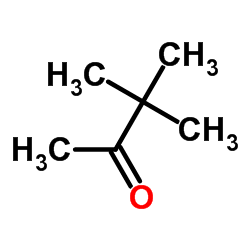 CAS#:75-97-8
CAS#:75-97-8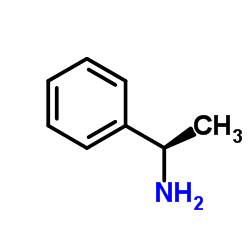 CAS#:2627-86-3
CAS#:2627-86-3 CAS#:75-83-2
CAS#:75-83-2 CAS#:558-37-2
CAS#:558-37-2 CAS#:120951-17-9
CAS#:120951-17-9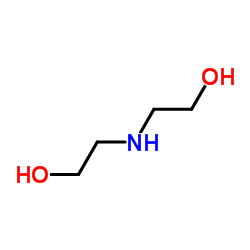 CAS#:111-42-2
CAS#:111-42-2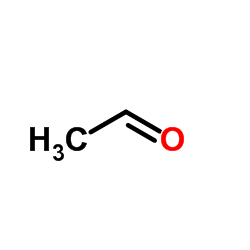 CAS#:75-07-0
CAS#:75-07-0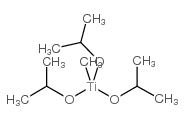 CAS#:18006-13-8
CAS#:18006-13-8 CAS#:630-19-3
CAS#:630-19-3 CAS#:81238-74-6
CAS#:81238-74-6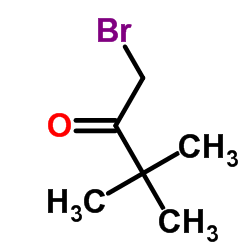 CAS#:5469-26-1
CAS#:5469-26-1 CAS#:4358-75-2
CAS#:4358-75-2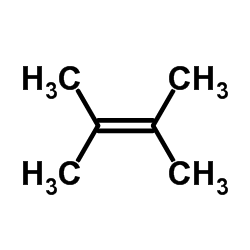 CAS#:563-79-1
CAS#:563-79-1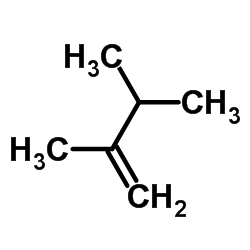 CAS#:563-78-0
CAS#:563-78-0 CAS#:75-98-9
CAS#:75-98-9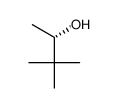 CAS#:1517-67-5
CAS#:1517-67-5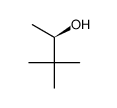 CAS#:1572-96-9
CAS#:1572-96-9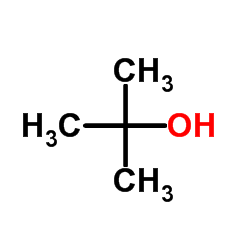 CAS#:75-65-0
CAS#:75-65-0